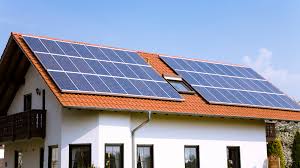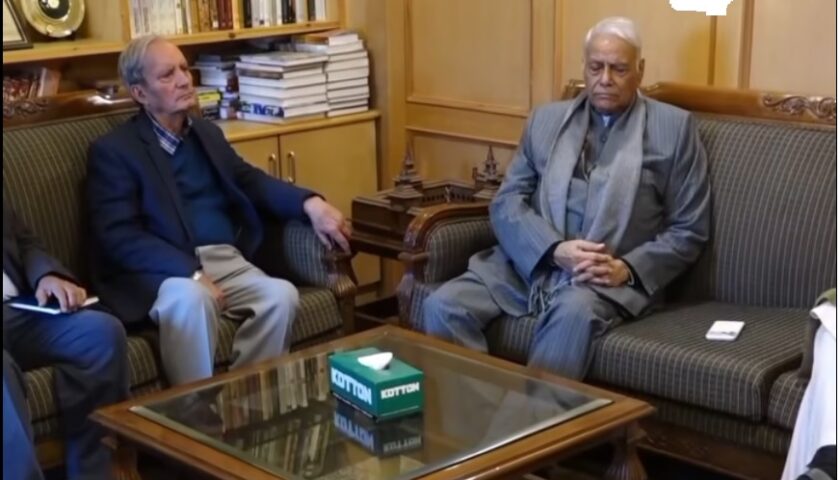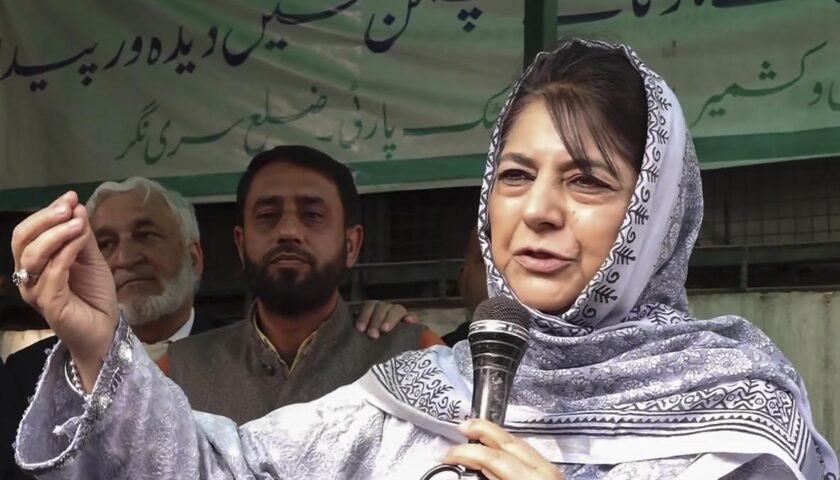In a bold policy move, the administration of the Jammu and Kashmir (J&K) region has announced that the promised 200 units of free electricity for the poorest households will be delivered only after rooftop solar panel installation on those homes. According to official responses in the local Assembly, the benefit will apply exclusively to families under the Antyodaya Anna Yojana (AAY) category—some 2.22 lakh such families. The installation will be under the national scheme PM Surya Ghar: Muft Bijli Yojana (PMSG) via its Utility-Led Aggregation (ULA)/RESCO model.
On the face of it, the conditional link between “free power” and “rooftop solar installation” may raise eyebrows. After all, if you are a poor family in the Kashmir region facing rising electricity costs and perhaps unreliable supply, you might ask: Why should I wait, or be required to install solar panels to get the benefit?
This article examines the policy in detail: what is being promised, the mechanics of how it will work, the logic underpinning the decision, the opportunities it creates, as well as the risks and potential inequities. And then we ask: is this move justified?
Policy Overview: What Has the J&K Government Said?
Identification of Beneficiaries
According to the government’s reply to the Assembly, approximately 2.22 lakh AAY households in J&K have been identified for this scheme.
These are among the poorest families—beneficiaries under the Antyodaya scheme—who often live in remote locations or with structural disadvantages.
Free Electricity in the Promise
Each of these households is to receive 200 units of free electricity per month once the conditions are met.
At present this is not yet in immediate effect: the government clarifies that free supply will begin only after the installation of rooftop solar systems under PMSG for each household. Greater Kashmir+1
The Solar Installation Requirement
Each household is expected to be equipped with a 2-kilowatt rooftop solar plant (as per the official clarification).
The implementing model will be under RESCO/ULA (third-party/vendors install and maintain systems, the beneficiary has little or no upfront cost). The ministry of renewable energy has given in-principle clearance.
Current Status & Implementation Process
According to the government reply:
-
The Detailed Project Reports (DPRs) are under preparation.
-
Tenders for vendor installation are in process.
-
Smart meters have been installed: the government claims 6.52 lakh smart meters across Jammu & Kashmir (2.81 lakh in the last two years) under various schemes.
-
The government says there is no proposal to privatise the management of smart meters.
Thus, while the announcement has been made, the actual rollout is contingent on the installations being commissioned.
Why the Link Between Solar Installation and Free Power? (The Logic)
The government has laid out — or at least the logic behind the move can be deduced — several strategic motivations behind linking rooftop solar panel installation with the free electricity promise.
1. Promoting Clean Energy & Renewable Uptake
By making the free 200 units contingent upon rooftop solar installation, the policy sends a strong signal: adopt solar power and decentralised generation. This aligns with broader national and global goals of reducing fossil-fuel dependence, cutting carbon emissions, and promoting distributed renewable energy.
For example, the national rooftop-solar push is embedded in the PMSG scheme itself (which aims to benefit about 1 crore households across India) and broader rooftop targets. myScheme+1
In J&K especially, if many households switch to rooftop solar, the local state moves closer to cleaner energy, lowering reliance on grid electricity, which often in mountainous or remote areas is costly and vulnerable.
2. Reducing Grid Burden, Especially in Peak Seasons
Within J&K, especially in the Kashmir valley during winters, electricity demand spikes and supply constraints often lead to distress cuts or load-shedding. If a large number of households generate at least part of their electricity via rooftop solar, the load on the conventional grid is reduced. Indeed, the government has explicitly cited “reducing grid load” as a reason.
Essentially, rather than simply supplying free units (which increases the burden on distribution companies and the state budget), linking generation (solar) to consumption makes the scheme more sustainable in the long term.
3. Long-Term Cost-Savings & Sustainability
While installing a rooftop solar panel initially involves cost (or financing), once operational the panels will generate electricity at low marginal cost. Over time, the power from solar offsets grid consumption, reducing the electricity bill burden for the household and reducing subsidy burden for the government/distribution utility.
Hence, the link ensures that the free units benefit both sides: the household (via lower cost, more reliable power) and the system (via lower subsidy burden). The government’s official response mentions that the scheme “ensures financial sustainability and avoids losses to power distribution corporations.”
4. Energy Security & Equity for Poor Households
Many AAY households may live in feeder zones with high technical losses, poor reliability, or remote areas. If they get rooftop solar, they become partially self-reliant for power generation, reducing vulnerability to supply interruptions. This can be viewed as an energy-inclusion measure. The policy thus tries to uplift the poorest by linking them to a renewable asset rather than just a subsidy.
5. Infrastructure Investment via RESCO/ULA Model
Under the RESCO/ULA model (Renewable Energy Service Company/Utility-Led Aggregation), third-party vendors or aggregators install the solar systems with little or no upfront cost to the beneficiary; maintenance is handled via contract with the utility or the aggregator. This allows the government to implement at scale without heavy upfront fiscal burden of subsidising each installation fully, and gives outsourcing of operation/maintenance to entities specialising in that. The government reply explicitly references this.
Hence, the linkage is not arbitrary but rooted in a strategic design combining subsidy, generation, and consumption, targeted to the poor.
On-Ground Considerations, Challenges & Potential Risks
While the logic is sound in principle, the success of this scheme will hinge on how the implementation plays out on the ground. Several risks, equity issues and practical hurdles merit discussion.
A. Installation Delays & Procedural Bottlenecks
As has already been pointed out in the official response, the scheme is still in the DPR/tendering phase. For AAY families awaiting the free 200 units, any delay in solar plant installation means a delay in receiving the benefit. Ground realities in J&K (terrain, connectivity, weather) may delay vendor deployment, hardware delivery, technical inspection, commissioning, etc.
If the “free power” benefit is contingent and delayed, it may undermine trust among vulnerable households.
B. Rooftop Suitability and Technical Preconditions
Not all households may have a rooftop structure suitable for a 2 kW solar system. Issues might include: weak roof construction, shading (trees/adjacent structures), orientation, absence of permission, structural safety, connectivity issues, or poor grid-tie conditions.
Some AAY households may live in older constructions or rental structures where consent is harder to get. If such practical constraints prevent installation in a timely manner (or at all), then tying the free power to installation may penalize those who are already disadvantaged.
C. Awareness, Training, Maintenance & Behaviour
For solar systems to work effectively, basic awareness is needed: how to use net-metering, maintenance checks (cleaning panels, checking inverters), what happens if there’s a fault etc. Poor households may lack technical literacy or may perceive the rooftop solar as an extra burden rather than a benefit unless the vendor/utility does adequate hand-holding.
If maintenance is neglected, system output may suffer and expected benefits may wane — affecting both the household and the scheme’s viability.
D. Equity Concerns: Exclusion Risk
One of the key criticisms is that linking free power to solar installation may exclude eligible poor households who, for reasons beyond their control, cannot undertake rooftop solar installation. That might happen due to:
-
Structural unsuitability of roof, or landlord refusal (for rented house)
-
No space or shading problems
-
Consent/permission issues
-
Delay in vendor installation disproportionately affecting remote areas
If these households are still eligible economically but cannot install the panels, they might lose out on the free-units benefit — creating a new kind of inequality.
E. Financial Sustainability & Vendor Oversight
While the model is designed to reduce subsidy burden, the vendor/aggregator model needs strong oversight: ensuring installation quality, system performance, timely commissioning, operational maintenance, monitoring of output. If systems underperform, households may not receive full benefit, grid load reduction may not materialise, and the utility may bear losses.
Also, smart meter functioning, net-metering policy, invoicing for free units, ring-fencing subsidy flows — all these need to be robust. The government claims no privatization of smart meters but the roll-out of 6.52 lakh meters suggests significant infrastructure change.
F. Timing vs Immediate Relief
From a social justice perspective, poor households in J&K are facing rising electricity bills, winter demand spikes, supply constraints. While the solar-installation link is forward-looking, some may argue that immediate relief in form of free units should not be contingent — especially given the urgency of winter months. Some voices in the Assembly have already flagged this.
G. Monitoring & Transparency
For the scheme to succeed, transparency around beneficiary identification, vendor selection, installation status, meter readings, monthly reconciliation of free units, and complaints redressal will be critical. In past solar programmes, delays and non-performance sometimes undermined trust.
Is This Move Justified? A Balanced Assessment
Putting together the logic and the on-ground considerations, how do we assess whether this policy is justified?
Arguments in Favour
-
Strategic alignment with renewable goals: Linking free power to solar installation helps align distribution subsidies with generation decentralisation, making the scheme more sustainable in the long term.
-
Reducing subsidy burden & grid load: By encouraging households to generate, the policy helps ease pressure on the state’s power supply infrastructure and finances, especially important in a region like J&K with high losses and supply challenges.
-
Empowering the poorest with asset creation: Rather than only giving a recurring subsidy, installing solar gives the household an asset (a power-generating system) that may provide long-term benefits beyond the free units.
-
Fair usage incentive: The policy may discourage misuse or over-consumption of the “free” electricity by tying the benefit to fixed capacity generation.
-
Modernising infrastructure: The rollout of smart meters and rooftop solar systems can improve overall power-sector efficiency, which benefits all stakeholders in J&K.
Arguments of Concern
-
Potential exclusion of the most vulnerable: If certain households cannot have rooftop solar for technical or structural reasons, they may be left out of the “free units” benefit — which undermines equity.
-
Delays mean delayed relief: If solar installations are slow, households that need help now may wait months for commissioning — weakening the social welfare objective.
-
Implementation risks: Quality of installation, maintenance, vendor accountability, monitoring output — all these need heavy oversight. Failure may result in non-performance, and the household may get neither reliable power nor the free-units benefit.
-
Communication & trust issues: If the policy is seen as adding bureaucratic hoops to a simple promise (“free electricity for poor”), it may cause disenchantment among the very people meant to benefit.
-
Winter-time urgency: In J&K, winters bring high electricity needs; tying benefits to installations may miss the immediate need period unless rollout is very rapid.
My Verdict
On balance, I believe the policy is justified, provided that implementation is handled thoughtfully and with urgency. Here’s why:
-
In a resource-constrained region like J&K, granting free power unconditionally to a large segment of households may lead to unsustainable subsidy burdens and stressed grid conditions. The rooftop solar link helps manage that risk.
-
The move transforms a welfare subsidy into an investment in renewable infrastructure for the poorest — arguably a higher value proposition.
-
If implemented well (roof assessments done rapidly, vendor contracts transparent, installations commissioned swiftly), the scheme could serve as a model for inclusive, sustainable energy policy.
However — and this is critical — the policy must incorporate safeguards to ensure that no eligible household is excluded due to technical or structural issues beyond their control. The government must offer alternative relief or alternative pathways (for example, shared solar installations, community instalments) for those who cannot host rooftop systems. Also, implementation timelines must be tight so that relief does not get deferred for months. If these caveats are ignored, the policy risks becoming a barrier rather than a benefit.
What Needs to Be Done for Effective Roll-Out
To make this scheme work in practice, the following measures are essential:
1. Rapid Roof-Suitability Survey & Assessment
Before rollout, conduct a quick but thorough assessment of each identified AAY household’s rooftop: structural strength, orientation, shading, roof area, clearance for solar panels, wiring connectivity. Households whose roofs are unsuitable should be flagged and provided alternative solutions (shared system, ground-mounted communal system, etc).
2. Transparent Vendor/Tender Process
Ensure that the tendering and vendor contracting for the 2 kW rooftop systems are transparent, competitive, time-bound. Contracts should include performance guarantees (uptime, generation thresholds), maintenance clauses, clear hand-over to beneficiaries.
3. Awareness & Training for Beneficiaries
Even though the installation is via vendor/RESCO, households must be made aware: how the system works, what their free-200 units benefit means, what maintenance they must do, whom to contact in case of faults, how smart-meter readings tie into benefit disbursement.
4. Monitoring, Maintenance & Performance Audits
Post-installation, there should be periodic monitoring of system performance (generation vs expected), maintenance logs, audits. If a system under-performs, the vendor should fix it without cost to the household. Distribution utility must monitor smart-meter data for correct free‐units accounting.
5. Clear Timeline & Interim Relief Options
Given that installation takes time, the government should consider interim relief measures (maybe pro-rated free units or temporary subsidy) so that households are not left stranded waiting. Clear communication of expected timeline helps manage expectations and builds trust.
6. Equity Mechanisms for Special Cases
For households where rooftop installation is unfeasible (structural, rented houses, shaded roofs, etc), the policy must provide an alternate pathway: e.g., participation in community solar, ground-mounted panels in common area, or direct subsidy until preparation of shared system. This ensures the poorest are not left out for reasons beyond their control.
7. Strong Grievance Redressal & Public Transparency
There must be mechanisms for households to check installation status, raise complaints (non-installation, delays, poor performance), track the free-units benefit once system commissions, and see publicly accessible dashboards of progress. This transparency builds credibility.
Wider Implications for J&K and India
For Jammu & Kashmir
-
If successfully implemented, J&K could reduce its electricity subsidy burden, reduce losses in distribution, improve supply reliability in remote areas, and promote green energy adoption — all while uplifting its poorest households.
-
The region’s geology and weather lend themselves to solar uptake. While winter daylight hours reduce, summers (and spring/autumn) offer good solar radiation; rooftops across the valley and plains can host systems.
-
The smart-meter rollout and solar installations may modernise J&K’s power sector, making it more efficient and less dependent on external supply.
-
There’s potential for replicating a “solar-first welfare model” in other states and UTs.
For India
-
The policy is aligned with the national rooftop-solar goals (via the PMSG scheme) and the push for distributed generation.
-
It provides a template: instead of giving free electricity unconditionally, link welfare subsidies to productive assets (solar systems) that reduce long-term cost and environmental burden.
-
If the RESCO/ULA model functions well, economies of scale may reduce per-household cost of rooftop solar, making adoption wider and more viable.
-
Monitoring performance and addressing equity gaps will be an important learning for other states interested in “free electricity + solar” hybrid schemes.
Bottom-Line
The decision by the J&K government to tie 200 units of free electricity for AAY households to the installation of rooftop solar panels under PMSG is a forward-looking attempt to reconcile social welfare with sustainability, infrastructure modernisation and renewable energy goals. The logic is sound: turn a subsidy into an asset, decentralise power generation, reduce grid load, and equip the poorest with cleaner and more reliable power.
However, the success of this policy will depend heavily on execution. If installation is delayed, if structural/technical barriers exclude households, if vendor performance is weak, or if the free-units benefit is deferred, then the promise may not deliver its full value. The equity test is particularly critical: ensuring that no eligible household is left out because of factors beyond its control.
In short: yes, the move is justified — but only if the implementation is inclusive, transparent, and fast-tracked. For J&K’s poorest, this policy could mark a significant improvement in power access and affordability — turning roofs into power-generating assets rather than consumption liabilities. The coming months of installation and rollout will determine whether the promise is realised.




